What are they, the warriors of the Middle Ages?
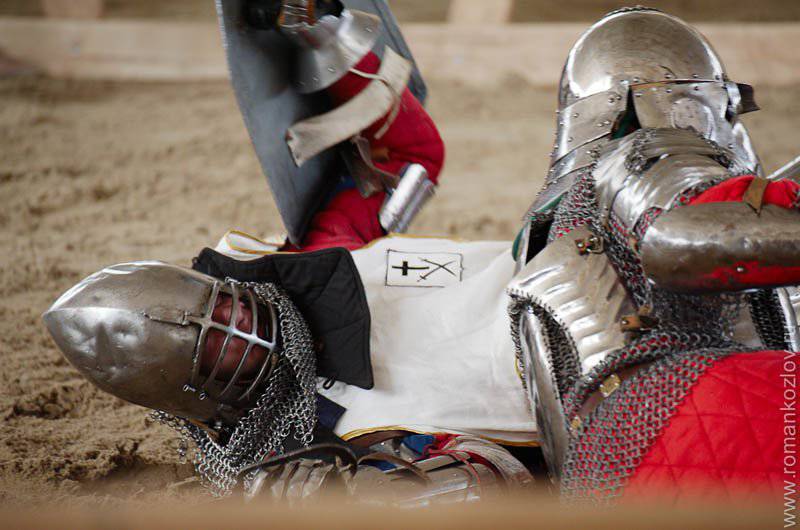
It would seem that a lot has been written about the Middle Ages, but, nevertheless, interest in this historical period has not waned so far. One of the reasons for this is the warriors, who were distinguished by excellent fighting qualities. And although they did not possess magic and could not use it in the fight with their enemies, but quite real weapons many of them were fluent in perfection.
One of the brightest representatives of the Middle Ages are the Vikings. And let them belong to different nations, this did not prevent them from understanding each other. The northern lands were the birthplace of all of them, so the French Vikings were called "Normans". At the very beginning, the word "Viking" denoted sea robbers who raided the enemy in coastal waters. And in Scandinavia, they became known long before the first mention of them in Europe.
And wherever the Vikings kept their way, they always seized foreign lands, sometimes even remained in the conquered territories and became rulers there. From the French, they managed to win back a part of the country, which was named Normandy. The Vikings also raided the Russian lands, even descending to the shores of the Caspian and Black Seas. The Vikings are the last German barbarous conquerors and the first European navigators-pioneers.
For attacks, the Vikings used detachments of specially trained warriors, who formed detachments of several hundred people. By the way, joining these units has always been voluntary. During the raid, one of the warriors necessarily carried a banner, which was very honorable. Therefore, as a rule, an especially distinguished warrior was chosen for this purpose. It was believed that the banner can not only bring victory in battle, but also save the lives of those who bear it. The main task of the Vikings in case of defeat was to protect their commander (king), and if he died, then all the warriors fought to the last near the body of the leader.
Among the Vikings, the Berserkers, who in principle did not wear armor and did not hide from the dangers, were particularly fearless. They went right through, as if insane, inducing this horror at the enemy. Berserkers could bring themselves to a state of euphoria and fought to death, crushing enemies.
Often the Vikings used the bilmen units. As a rule, these were infantry warriors armed with battle sickles (halberds). This weapon was a kind of peasant sickle, which was used for harvesting. It combined a needle tip and a blade of a battle ax with a sharp butt. It was widespread in the Middle Ages as an effective weapon against cavalry. However, later, when firearms appeared, bilmen lost their purpose, so they began to be used in parades and magnificent ceremonies.
But, as it turned out, invincible Vikings also had weak points - this is the inability to prolonged siege. This, in fact, was one of the reasons for their defeat.
Knights were no less outstanding military qualities. So, for example, the German knights united around the Teutonic Order, which arose on the basis of a hospital that was organized by German pilgrims and crusaders between 1120-1128 for years. The order itself (as a spiritual organ) was registered only in the 1190 year, and six years later it was reorganized into a spiritual and knightly order.
Sometimes the Teutonic Order is compared with the Order of the Templars and the Order of the Hospitallers. Its members gave three vows: poverty, chastity and obedience. In those days, the knights were completely dependent on the Pope and did not submit to the sovereigns in whose territory their possessions were located.
It is known what role was played by the knights of this order during the conquest of the Baltic and Prussian territories. Beginning with 1215, the Knights, on the initiative of the Pope, penetrate the Baltic coast, ostensibly with the aim of planting Christianity. However, this process was carried out with the help of bloody operations. And Prussian lands were taken under control for incomplete 50 years. They managed to conquer a significant part of Poland, and also represented a constant military threat to Lithuania. In 1216, the Teutons suffered a defeat in the fight against the Lithuanians, and the Prussians revolted against the German knights. And only after many years in 1283, they managed to conquer the freedom-loving Prussians. And in order to retain control of the Baltic states, the Teutons continued to brutally destroy all the recalcitrant, all who dared to provide even the slightest resistance.
After uniting with the Swedish feudal lords, the Teutons began to look at the Russian lands, because the Pope wanted to dominate the whole world. Russia in this regard was very valuable above all for its inexhaustible wealth. But Russia was able to provide decent resistance, as evidenced by the battle on Lake Peipsi in 1242. It was the defeat of the knights in the Battle of the Ice was the beginning of the end for the Teutonic Order. They no longer had the opportunity to move to the East, committing looting and seizing land.
Much later. in 1409, a great war broke out between the knights of the Teutonic Order and the combined forces of Poland and Lithuania, the result of which was the defeat of the Order, and its expansion to the eastern lands was ended. The Teutonic Order was forced to abandon political independence.
In England in the 15 century, knights in brilliant plate armor first appeared. That is how they entered the medieval legends. Of course, the knight in armor looked more impressive than in chain mail. Especially popular are the English knights from the time of King Arthur. But, unlike the descriptions that are full of literature, they were far from being so faithful and loyal. Many knights were looking for money and a good position. Therefore, without special hesitation, they could move from one side to another. And some turned into real thugs. During this period, chivalry as a phenomenon radically changed. They no longer needed to protect the interests of the sovereign in exchange for land. Moreover, many of them preferred a peaceful existence, without war. In addition, any rich citizen who had no knightly past could become a knight. The knights who took part in the war occupied officer positions in the army, which was becoming more professional.
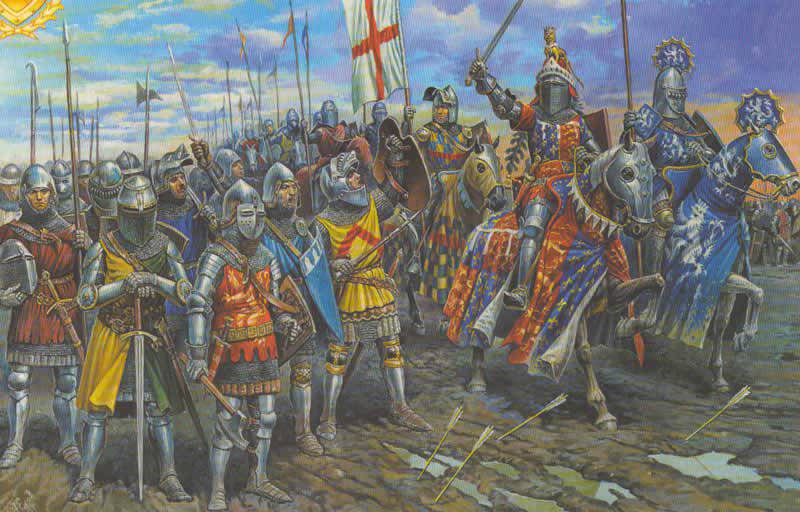
It is necessary to say a few words about the fact that in the Middle Ages, a crossbow — a mechanical bow — came to replace the war bow. Beginning in the 15 century, these weapons became widespread in Europe. Characteristic was the formation of detachments of crossbowmen, mainly in the knightly armies. The crossbow was much more accurate than a regular bow, and also had more destructive power, but sometimes it was not so fast. The reason for its popularity was the fact that the string was stretched with the help of the gate. Since no more physical effort was needed to pull the string, the light crossbow became heavy, and its arrows could even pierce armor. But this weapon also had drawbacks - this is not a very convenient form, high cost and difficulty with reloading. The crossbow could only afford a regular warrior.
Carapace boyars are a category of warriors of the Grand Duchy of Lithuania and Eastern Europe of the 10-16 centuries. They came from the "armored servants", that is, people who are obliged to carry out military service on a horse, being dressed in heavy armored weapons. As a rule, they were exempted from paying their duties. And later, when the period of wars was in the past, they were drawn to serve as messengers or policemen. This estate was especially prevalent in Kievan Rus, Bulgaria, Muscovy, Moldavian principalities, Wallachia.
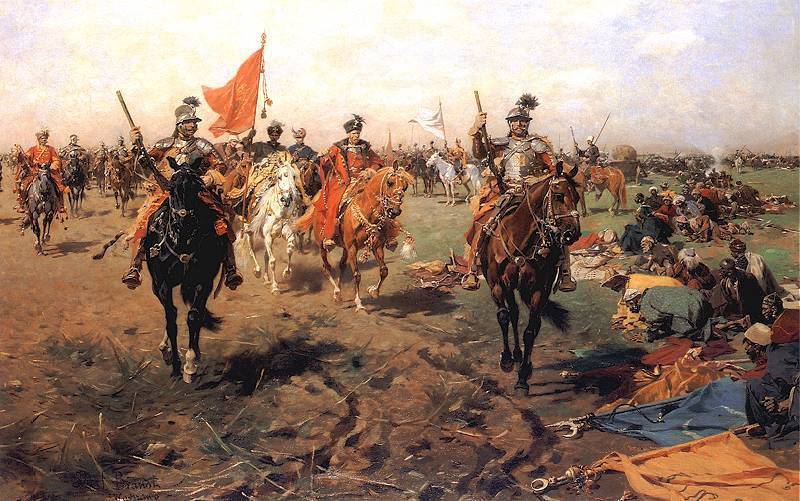
Armored boyars were a kind of "layer" between the nobility and the serfs. They owned land plots with the right to transfer them by inheritance, for which they were in military service. Despite the fact that some of them had serfs, they preferred to farm the land themselves. They also had the right to live in cities and engage in trade and crafts.
After Belarus was annexed to the Russian Empire, the armor-clad boyars were ranked among the palace peasants and they received rights on a par with the Ukrainian Cossacks.
Great interest among historians continues to cause the Order of the Templars and the Order of the Hospitallers.
The Order of the Hospitallers was created in the 12 century and is named in honor of St. John of Jerusalem. The main purpose of his appearance is to protect the pilgrims who traveled around Jerusalem. At the very beginning of its formation, the order served mainly missionary and charitable functions, and the knights were needed only for protection. But later, during the crusades, the order was transformed into a monastic-military organization, headed by Grand Master Raymond du Puy. After the Crusaders were driven out of the Holy Land, the Hospitallers, after briefly staying in Cyprus, conquered the island of Rhodes, where they established their state. However, in 1522, they were forced to leave the island because of the Turkish siege. In the 1530 year, the Hospitallers took possession of the island of Malta (hence its second name Maltese), on which the fraternity remained until the 1798 year, the time of its capture by the French. They launched a fight at sea against the Levantine, Algerian, Tripolitan and Tunisian pirates, and also repelled the attacks of the Turkish troops in 1565.
The Order of Malta was eventually forced to return to Rome, but even here its knights honored their traditions and maintained sovereignty. To date, the Order of the Hospitallers is the only order that is officially recognized, unlike the Order of the Templars, about which more rumors are circulating than the truth. For the entire period of its existence, the Knights of the Order of Malta participated in the political world life. And now they are observers at the UN.
The Order of the Templars is, like the Order of Malta, a military-religious order, the foundation of which falls on the 1119 year. In the same way his knights were to protect the pilgrims. History Order began with simple Crusaders, but soon he became one of the richest orders. By the way, it was the Templars who invented the banking system, they repeatedly lent large sums of money. In addition, the knights had broad legal and religious powers with which the pope (the direct manager of the order) conferred them.
The battle of Varna took place 10 on November 1444 of the year between the united army of the crusaders and the Ottoman Empire near the city of Varna. The battle was the end of an unsuccessful crusade against Varna of the Hungarian and Polish King Vladislav. The outcome of the battle was the complete defeat of the Crusaders, the death of Vladislav and the strengthening of the Turks on the Balkan Peninsula.
The Templars were widely known for their fighting qualities, they had good military training, they skillfully owned weapons, and the detachments were distinguished by a high degree of organization and discipline. But beyond that, the knights of the order were known as debauchees and drinkers. In addition, the wealth did not bring them to good. Philip the Fair was very jealous of such innumerable riches. Therefore, a lawsuit began over the Templars, as a result of which most of the knights were burned. But no one got the gold, and nothing is known about where it is at the moment. Those of the Templars who survived, managed to safely hide it.
No less interest of historians is caused by yet another representatives of the military Middle Ages - khuskarly. Initially, this word meant court servants. But in the Viking Age, its value changes. In those days, so began to call the royal warriors. In England, in the first half of the 11 century, the term “khuskarly” began to denote a closed, unique organization of professional soldiers, which formed the basis of the Anglo-Saxon army. As a rule, this corps was used for offensive operations.
Most often, the origins of the xuskarls are associated with the pirate fraternity of the Vikings from the fortified Jomsborg. Khuskarly had a high level of military organization, had their own code of honor, were loyal to the king. Most of them received land tenure for service, where they lived in peacetime.
This organization had its own charter, which defined the rights and obligations of the participants. So, for example, at the royal table, everyone had to sit down by their nobility of origin or by seniority. If any of the khuskarlov committed a misdemeanor, he was transplanted to a lower location. If there were three such misdemeanors, the guilty were put to the very end of the table, where no one spoke to him. In addition, it could throw bones. If the huskarl killed a comrade - for this he lost his head or was expelled beyond the boundaries of those lands where Anglo-Saxon King Knut ruled. In addition, the word "coward" was glued to it tightly. A similar punishment was imposed for treason - the penalty or confiscation of property.
Since the number of khuskarls was insignificant, they were never used as an independent combat force, even though they surpassed the national Anglo-Saxon army in military strength. Most of the Houskarls were killed at the Battle of Hastings in 1066. The survivors left England, moving to the service of the emperor of Byzantium.
Of course, this is not a complete list of medieval warriors. Here are only the most fearless of them, those who entered the history of civilization as the brightest representatives of the era.
Materials used:
http://mport.bigmir.net/war/1519397-TOP-5-luchshih-voinov-Srednevekov-ja
http://refak.ru/referat/1838/
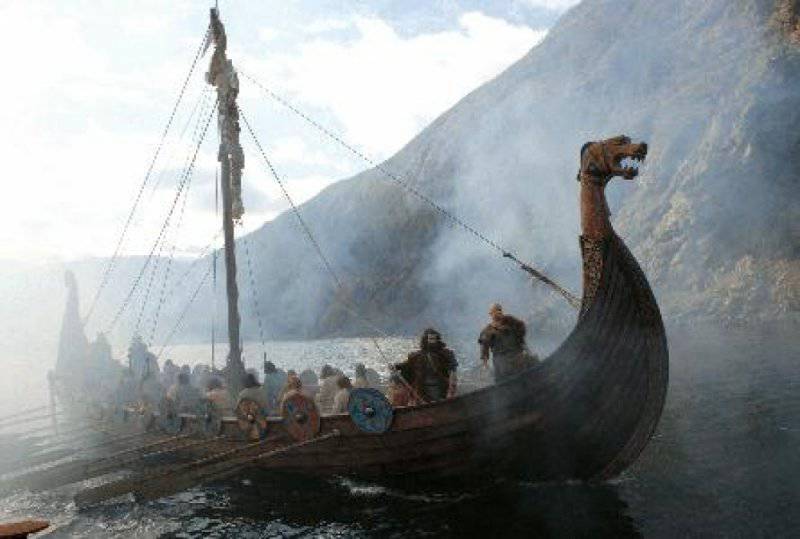
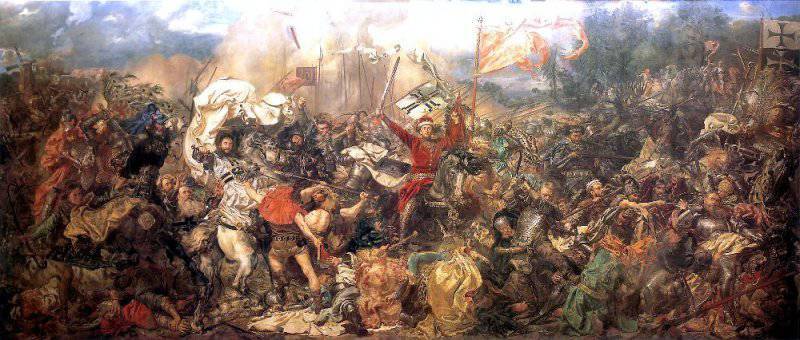
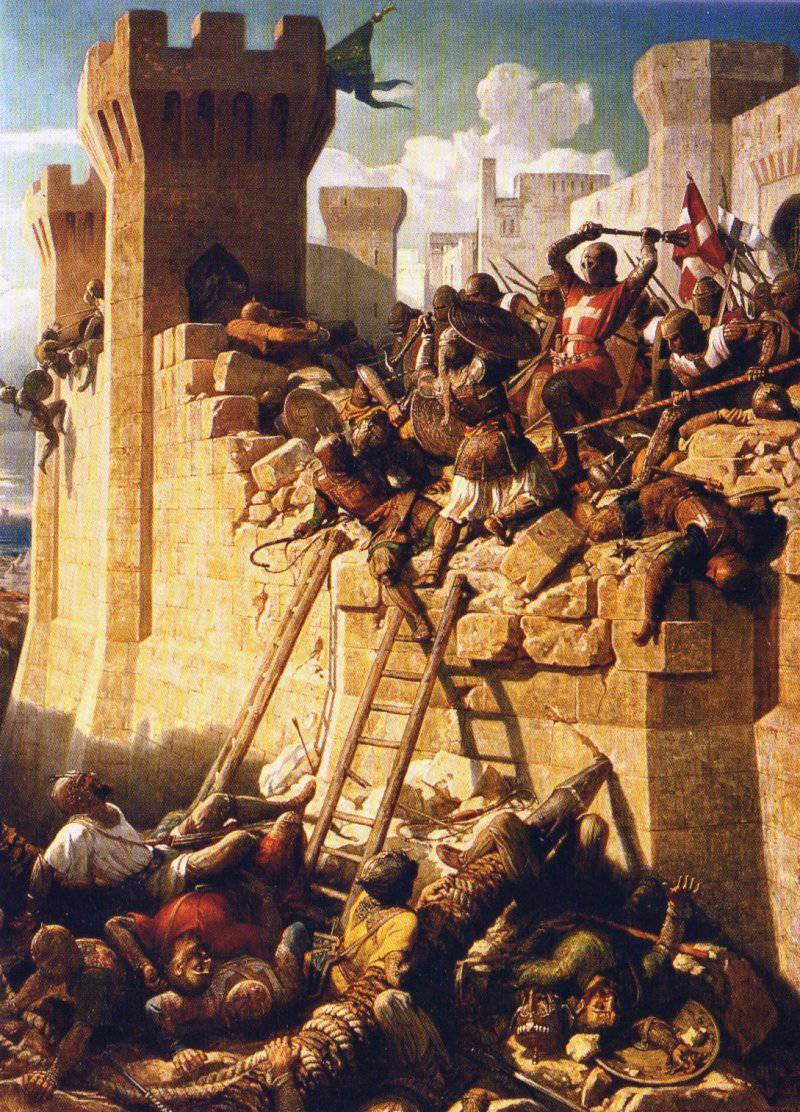
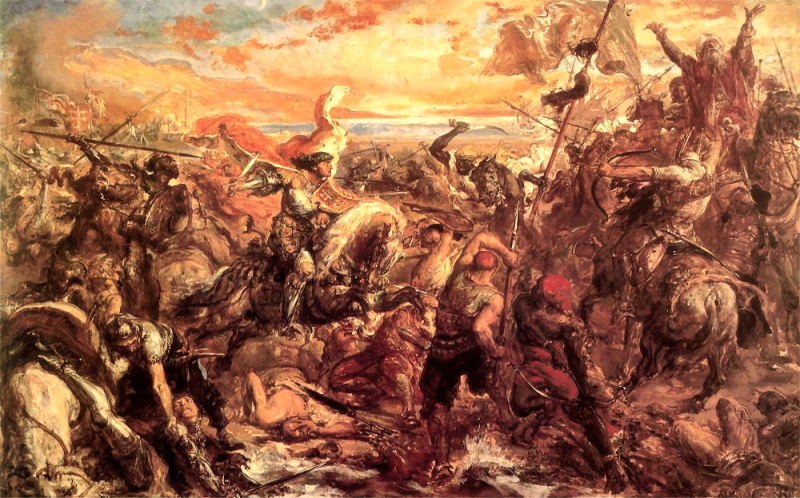
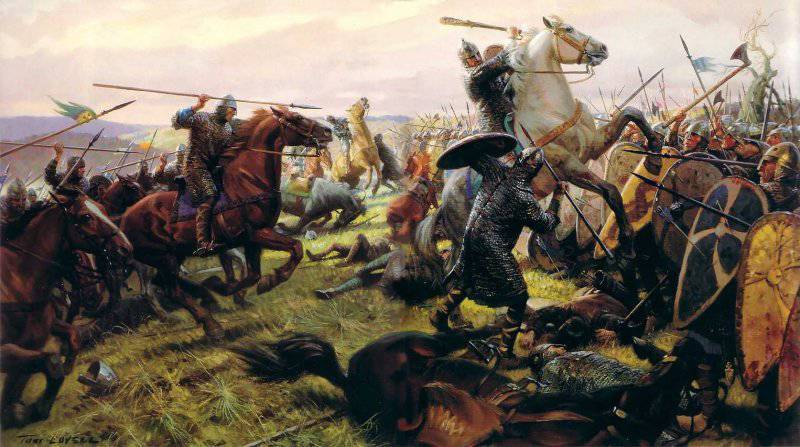
Information